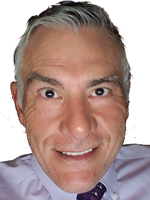When death came to our house
Death came to our house when I was 10, on June 30, 1970. It was Tuesday morning, we were going to start summer day camp, and the telephone rang just after 7:00 a.m. The call was for my father, but suddenly he was in extremis. My mother thought he was kidding with his gasps and snorts, “Fred, stop that!” I thought the call was for me and stood at the foot of my parents’ bed watching the spectacle unfold with my mom in full panic as my father turned purple. She screamed for me to call an ambulance. I dialed zero on a rotary phone.
Unfortunately, all the King’s horses and all the King’s men could not put my father back together again. A heart attack – myocardial infarction – took a 40-year-old physician’s life, leaving his widow from Holland with four children, 10 and under, in the new house he built but did not move into, and for which he had not yet signed the mortgage insurance – by just a few hours.
It was an unmitigated disaster for my mother, and I never appreciated just how bad things were for her until many years later. I knew well what the immediate effects were on me, and I have come to understand how dysfunctional my family became and how unprepared I was to raise my own children as a consequence of that event.
Death of a parent can create such confusion and leave so much ignorance. When we look at these cases, particularly those involving young children, we need to pull all the stops and get the best advice for future counseling and support for the family; it simply cannot be assumed. Help here will make life’s potholes more avoidable and easier to handle down the road.
This issue of Advocate is dedicated to the most catastrophic of events for families: the premature, tragically avoidable death of a spouse, a child or a sibling. (Knock on wood.) The better prepared plaintiffs’ attorneys are to enter the saddest arena with dignity and grace, the better they may service their grieving clients with surgical precision and efficiency. Experience tells us the faster a family begins the healing process from a death, the better their chances of making the best of their lives moving forward. These are the champions in life, and we can help.
It is not trite to say that death cases are the opposite of bodily injury claims. The victim of physical trauma cannot communicate the loss and the heirs at law are left in a vacuum that can suck the breath out of their chests. There is sadness, generally a fog of confusion, anger and sometimes a lack of unity and even recriminations. Everyone scars differently.
Lawyers must be ever aware that during the prosecution of a wrongful- death case, families will never have peace. They will constantly look back and rehash events no one wishes to remember. Until the case is closed, families cannot move forward.
We are fortunate to have excellent lawyers participating in this issue with thoughtful articles revolving around death claims and cases. I wish to express my admiration and gratitude to Elizabeth Hernandez, CAALA’s Secretary; Judge Elizabeth Feffer (Ret.); attorneys Aksana Coone, Nadine Khedry, Emily Ruby, Janet Gusdorff, David Greenberg, Okorie Okorocha, Tal Rubin, John Rice, Ian Samson, Paul Traina, Rahul Ravipudi, Brian Panish and Patrick Gunning. I hope that you will find their articles so helpful that you keep this issue close at hand for months to come. It has been a privilege to participate, and I am grateful for the opportunity.
David Hoffman

David Hoffman is in private practice in Woodland Hills emphasizing all aspects of major tort litigation, including medical malpractice, insurance bad faith and civil rights violations. Mr. Hoffman is a former firefighter and has tried over 100 cases to verdict. He has been a member of the CAALA Board of Governors since 1993. He is a co-founder of the L.A. Bench-Bar Coalition, served a term on the LACBA Judicial Appointments Committee, and has spoken at numerous MCLE programs. Mr. Hoffman graduated from UCLA in 1984 and received his J.D. from Southwestern University School of Law in 1988.
Copyright ©
2025
by the author.
For reprint permission, contact the publisher: Advocate Magazine
